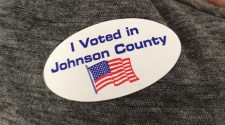It’s clear that technology has helped businesses and people around the world adapt to life during the COVID-19 pandemic — with “remote” ways of working, connecting and general living affecting most everybody. Not only is technology enabling businesses and people to maintain and adapt in order to get through challenging times, but, equally so, there’s a shift forward with the use of technology for innovative transformation to improve how things get done — call it an acceleration to the future.
In the insurance industry, one of those innovative transformations, albeit in the early stages, is the growing use of immersive technologies like virtual reality (VR) and augmented reality (AR), in risk control.
Insurers are recognizing opportunities and starting to apply immersive technology to both expand and enhance risk control services in four major areas:
- Site Assessment: Use AR/VR to expand capabilities of site assessment for exposure identification, loss prevention and mitigation using AR/VR in support of underwriting for new and existing clients.
- Client Services: Use AR/VR to broaden client relationships using AR/VR for risk education, risk/loss identification and mitigation, service planning and monitoring.
- Training: Use AR/VR to power training internally, shortening ramp-up time for new risk control representatives and providing a greater understanding of risk and potential loss for clients.
- Wellness: Apply AR/VR in the life and benefits insurance sector to home wellness checks for individuals who may not be able to travel easily.
In these areas, Insurers are discovering the value of immersive technology to help address current risk control “pain points.”
- Travel: Traveling to assessment sites is costly and time consuming.
- Knowledge Gaps: Expert knowledge from experienced professionals is required, and risks can be missed due to knowledge gaps.
- Documentation: The documentation and dissemination process is often lengthy. Scale: As insurance organizations grow, site assessment or client risk consulting services becomes difficult to scale.
- New Hires: Recruiting and training risk control technicians is challenging.
Some larger commercial insurance providers can have upwards of 20,000–30,000+ accounts in their portfolio and only a limited, finite risk engineering staff. Insurers are challenged by how to scale their risk control services and provide more of a consultative touch for their clients, as insurance clients who receive risk “consultative” services during the term of a policy tend to have significantly higher retentions. Furthermore, as the pool of risk control engineers have begun to age, it’s become harder to replace them.
A new way of hiring and operating
By implementing immersive technology like VR and AR, insurers can effectively address this situation while also making a long-term human capital investment in their own risk control services departments. New and less experienced hires, who can be hired more geographically to reduce travel costs and other logistical hurdles, can step right into meaningful and active risk control roles with virtually no previous experience with the aid of AR and VR technology.
For site assessments, less experienced staff can use a device integrated with immersive capabilities and be guided through a site assessment by the device as well as be connected with a more experienced risk control engineer in a home office or another location two or three states away.
This also can help create a more interesting career path for staff, where the newer, less experienced staff operating remotely with guidance can progress to the seasoned—and technologically savvy—risk engineers of tomorrow. Not only do insurers fill an immediate need, but are also setting up a self-sustaining pipeline of experts for the long term.
The latest technology upgrades
Lastly, no discussion of the topic would be complete without highlighting some of the cutting-edge capabilities incorporated with immersive technology such as:
- Computer Vision: Models and visualizes onsite risks, recognizes machinery and takes measurements.
- Remote Collaboration: Augments team knowledge and optimizes expert time usage.
- Automated Documentation via AR Checklists and Automated Data Input: Improves accuracy and reduces manual procedures, manual data input and documentation process.
- Digital Aids: Provides a physical history of plant and machinery and access to property blueprint.
These capabilities can be embedded into glasses, goggles and mobile devices and the technology is rapidly maturing. And, as these kinds of capabilities continue to mature, they can combine to drive the risk assessment process, client experience and create an accurate assessment of risks.
In short, using AR and VR in the risk control space brings innovative technology to expand risk assessment capabilities, reduce costs, scale resources and talent and improve accuracy, all of which are important as insurers seek to transform and accelerate to the future.
Steve Lipinski is Managing Principal, Insurance Business Consulting at EPAM Systems, Inc., and is a senior Executive in insurance business consulting, with a career that spans 37 years across the Insurance and Telecommunications industries. He can be reached at [email protected].
Related:
















